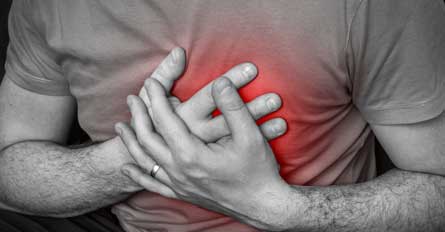High blood pressure, or hypertension, is the leading risk factor for heart disease. The information technology revolution, which has taken great leaps in our generation, has transformed the workplace into a rampant machinery for a sedentary lifestyle.
When the worker returns home after a nine-to-five job, primetime TV programming begins. After spending eight hours sitting in front of the computer, he returns home to become a couch potato. The usual cliché about the couch potato is the inescapable food-binging associated with TV viewing, and these foods are usually salty and sugary, like popcorn and soda.
Causes of High Blood Pressure

Hypertension happens when arterioles – small branches of an artery – become stiff and inflexible. This condition increases resistance to blood flow. The heart must exert more effort in pumping blood. The surging blood damages arterial walls, making them susceptible to plaque build-up. This plaque build-up leads to atherosclerosis, the hardening of the arteries. Hardened arteries force the heart to exert more effort in pumping blood, increasing pressure. This vicious cycle leads to heart disease.
The increased pressure can also rupture blood vessels in the brain, causing stroke, or in the abdomen, causing abdominal aortic aneurysm, learn more.
High Blood Pressure the Greatest Risk Factor for Heart Disease
High blood pressure is considered the greatest risk factor for heart disease. Since it is initially largely without symptoms, hypertension is dubbed as “the silent killer.”
High blood pressure seems more prevalent in individuals of Afro-Caribbean stock, and those from the Indian subcontinent. Men under 55 are more likely to have high blood pressure than women, but when women reach 55 they tend to catch up and even overtake men.
Risk Factors for High Blood Pressure
Genetics may account for 30% of most cases. Higher than normal fluid content in the bloodstream puts one at greater risk. This abnormal levels of fluid in the bloodstream are due to a salty diet (sodium retains water). The condition is made worse by narrower, stiffer arteries. This development is often the result of many factors, which leads to atherosclerosis, like the lack of exercise, being overweight, chronic stress and/or diabetes.
A sedentary lifestyle is a major contributor to hypertension, considering that more physical activity leads to better metabolism – the most important of which is the flushing out of excess salt in the bloodstream. Inactivity also promotes weight gain, and weight gain leads to insulin resistance. Diabetes, in turn, is a major risk factor not only for hypertension but also for heart disease. A sedentary lifestyle inclines towards the domino effect of one medical condition piling on top of another.
Stress is also a major risk factor for high blood pressure. Stress hormones make the heart beat faster and cause arteries to narrow, which raises blood pressure. Drugs known as ACE inhibitors lower blood pressure by controlling these hormones.
Blood Pressure Index

Blood does not flow in a steady stream but in spurts. Blood pressure is thus expressed in two numbers, (for example, 120/80). The number on top indicates systolic pressure, which is the peak force when the heart contracts and pumps blood into the circulation. The number below is the diastolic pressure, which is the pressure exerted when the heart rests between beats.
Blood pressure is:
- normal – if systolic/diastolic pressure is less than 120/ and less than 80
- pre-hypertensive – if 120-139/80-89
- stage 1 hypertensive – if 140-159/90-99
- stage 2 hypertensive – if greater than 160/greater than 100
The transient rise of blood pressure during exercise is healthy, and should not be alarming unless you already have hypertension and/or atherosclerosis. Too much exercise in counterproductive, as it stresses the heart and puts more pressure on arteries.

